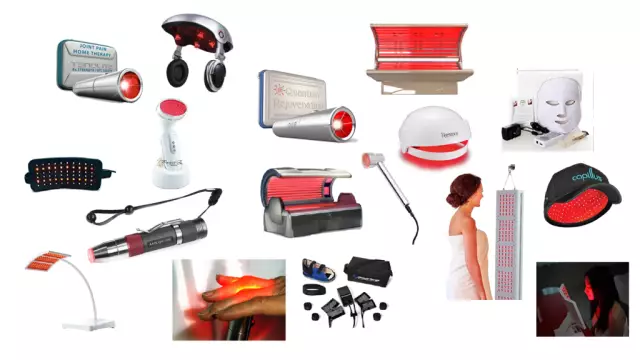- Author Rachel Wainwright [email protected].
- Public 2023-12-15 07:39.
- Last modified 2025-11-02 20:14.
Light therapy

Light therapy is one of the modern methods of medicine and cosmetology, based on the use of directed light beams that simulate sunlight.
Even the ancient Egyptians noticed the properties of sunlight to affect human health. This healing property was also described in the writings of Hippocrates. The exposure to light was widely used by Roman and Arab doctors.
In 1903, Danish physician Niels R. Finsen was awarded the Nobel Prize in Medicine for his work on light therapy - the development of a device that emits light with wavelengths equal in length to the rays of the sun.
During light therapy, waves of polarized light do not propagate chaotically, but strictly in parallel planes, which has a biostimulating effect not only on the area of influence, but also on the entire body.
Application of light therapy
Due to its optical properties, polarized light during light therapy has an effect directly on the membranes of the body's cells, which causes the activation of metabolic processes and the production of enzymes, an increase in the energy activity of membranes, the restoration of the normal rhythm of the functioning of the whole organism and an increase in energy reserves.
During light therapy, light penetrates deep into the skin, affecting the membranes of blood particles, making the blood less viscous, which increases the number of red blood cells and the possibility of its penetration into the smallest capillaries. This leads to an improved oxygen supply to cells and tissue nutrition.
Modern devices allow the use of light therapy in medicine and cosmetology.
In medicine, light therapy is used to stimulate the body's immunobiological forces. In addition, light therapy is most often used:
- For wound healing, rapid tissue recovery and pain relief for wounds, burns, bedsores, post-traumatic wounds and in the period after surgery;
- For the treatment of diseases of the oral cavity - gum disease, ulcers, inflammation of the mucous membrane of the mouth and lips;
- In the treatment of skin diseases such as eczema, acne, psoriasis;
- For the treatment of many skin infections of viral or bacterial origin;
- In sports medicine - with damage to muscles, tendons and ligaments;
- In the treatment of seasonal disorders, such as "winter depression", which is characterized by a tendency to overeat, irresistible drowsiness and loss of sex drive.
Application of light therapy for women
Several studies have confirmed that women are almost four times more likely to suffer from seasonal affective disorder than men. This is often the reason for the occurrence of not only depressive conditions, but also menstrual disorders.

Experiments have shown that light therapy is effective in relieving the symptoms of premenstrual syndrome. Light exposure in the middle of the menstrual cycle at night for three days contributes to a significant reduction and normalization of a long and irregular cycle, which increases the chances of women becoming pregnant with these deviations.
The use of light therapy in cosmetology
Light therapy is widely used in many beauty salons around the world. This allows not only to significantly improve overall health and strengthen the immune system, but also, by improving metabolic processes at the cellular level, quickly restore skin health.
According to many reviews, light therapy enhances the effectiveness of cosmetics and promotes wellness and overall relaxation.
Light therapy for the face is effectively used to treat acne, which most often occurs in people with oily skin. This disease often leads to the appearance of complexes due to the fact that the skin of the face is constantly covered with pimples and acne. Ultraviolet radiation from light therapy devices in several procedures allows you to destroy bacteria that lead to acne, without causing burns and other undesirable effects.
In addition, facial light therapy results in:
- Reducing the number of facial wrinkles and, as a result, smoothing the skin;
- To active stimulation of the production of collagen and elastin by cells, which increases the elasticity and tone of the skin;
- Improving complexion;
- To increase the degree of skin hydration, which helps to prevent skin moisture loss;
- Strengthening and toning the walls of blood vessels.
Light therapy for the face has a pronounced anti-aging effect, while the use of synthetic cosmetics can be minimized.
In addition to acne, light therapy, according to reviews, is effective for sensitive skin, rosacea (circulatory disorders in the skin), allergic dermatitis.
Light therapy has practically no contraindications. It is effectively used for cosmetic purposes for pigmented, aging, dry, problem skin, as well as for skin with poor blood supply.
The average duration of treatment is 45 minutes. As a rule, light therapy, according to reviews, is effective with a course of treatment, which is 10-12 procedures. The best effect is achieved by combining light therapy with other health care methods - gymnastics, nutrition, massage, and cosmetic skin care.
Found a mistake in the text? Select it and press Ctrl + Enter.






